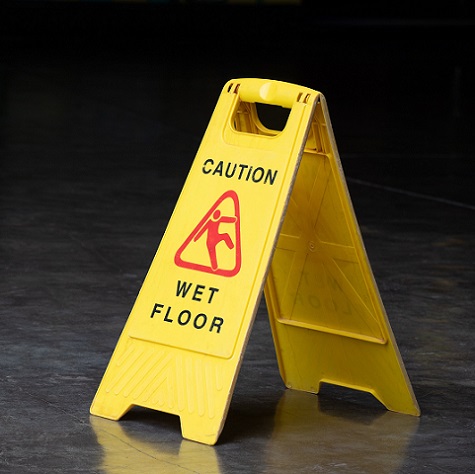It may seem counterintuitive to cleaning professionals, but the single chamber bucket you’re using to clean your floors is just the opposite – it’s filthy.
Think about it: when utilizing a traditional, single chamber mop bucket, there is not a separate space for clean solution and dirty solution. The dirty mop is usually dipped in the same solution used for cleaning, which can quickly become contaminated with dirt, debris, and bacteria. It is an ineffective method of cleaning to say the least.
Because floors represent the largest area of square footage in commercial buildings, how you clean them can significantly impact the health and well-being of building occupants. Moreover, contaminants from floors can be carried from space to space within and outside your facilities, creating a significant health and safety risk.
Limiting these risks may be as simple understanding how your single chamber bucket is working against you.
The Danger of Single Chamber Mop Buckets
Not only is cleaning with a single chamber bucket ineffective, but if you think about what you’re depositing in the bucket with every rinse, it’s also dangerous. Contaminated mopping solution contains settled particles in the atmosphere, including dust, cleaning chemicals and anything on the floor.
According to Waste Water Digest, hidden dangers in commercial mop water not only contain everyday air pollutants such as mold spores, pollen, and plant and insect parts, but also certain toxic items such as: dust mites, rodent waste, bacteria, and cigarette smoke.
Reducing the Risk of Creating a Dirtier Environment
In contrast, a dual chamber mop bucket system separates clean solution from dirty solution. This separation allows the user to dip the mop in the clean solution and then wring it out in the dirty solution, keeping the clean and dirty solution separate throughout the process. This helps ensure that the mop head cleans more effectively while staying clean itself.
When compared to a traditional Kentucky floor mop system, with a dual bucket chamber, the clean solution chamber stays soil free 13x longer than with a single chamber bucket, allowing you to clean twice as much area before changing the solution.
Dual chamber mop bucket systems may also include:
- An onboard scrub board to remove debris and larger dirt particles.
- An onboard wringer that enables the user to clean the mop head thoroughly before moving on to another part of the floor. It vastly reduces the spread of germs and dirt as you mop. The wringer also removes excess solution from the mop head, meaning floors dry faster.
Dual mop buckets are also significantly more efficient and environmentally friendly than single-bucket systems. The latter holds just about five gallons of cleaning solution, which cleans about 1,000 square feet when used with a cotton string mop. By contrast, a five-gallon dual-chamber paired with a microfiber flat mop bucket can clean 3,000 square feet, reducing water and chemical consumption by up to 66 percent.
Beyond the Bucket: Your Mop May Need a Refresh Too
Cotton string mops play an important role in certain scenarios, such as cleaning up wet spills, but generally a commercial microfiber mop is considered more cost-effective and efficient when compared to cotton string mops.
A microfiber mop head can be washed as many as 500 times, whereas a cotton mop only holds up to 30 washes. Microfiber also picks up more soil and bacteria, which cuts down on chemical use. The tiny fibers in microfiber mops serve like magnets, picking up particles as they go. Microfiber mop heads are also incredibly lightweight, making them easy to store and transport from space to space.
As important as the mop bucket and mop you choose are, there are four other aspects of your floor cleaning protocol that can complement your efforts:
- Your cleaning schedule. The Centers for Disease Control (CDC) provides cleaning type and frequency guidelines. During seasons when the weather is inclement, and illnesses are more common, the CDC advises adjusting cleaning frequency. This will also result in greater safety because slippery surfaces caused by snow and ice are kept under control.
- Color-coding floor cleaning equipment. Floor mops and buckets can be color-coded to help custodial staff easily identify the right equipment to use in a specific area. Using a designated mop for each area in a facility will help limit cross contamination to other areas; for example, the bacteria on a bathroom floor mop will not be transferred to the floors when cleaning an employee breakroom.
- Proper mop storage. Studies show that storing wet, soiled mops leads to increased levels of bacteria growth that cannot be decontaminated by chemical disinfection. To combat this, the mop head must be replaced and laundered after each use.
- Replacing old equipmentensures your mop heads are always clean and easy to use. Because the dual-bucket system is more efficient, you may save time and money in the long run.
Never Clean with Dirty Solution Again
For building service contractors, janitorial services and facility managers, having the latest floor cleaning equipment makes the cleaning experience more efficient, safer and cleaner. Clean floors with solution 13x cleaner and remove twice as much bacteria from your floors with the OmniClean Floor Care System.

